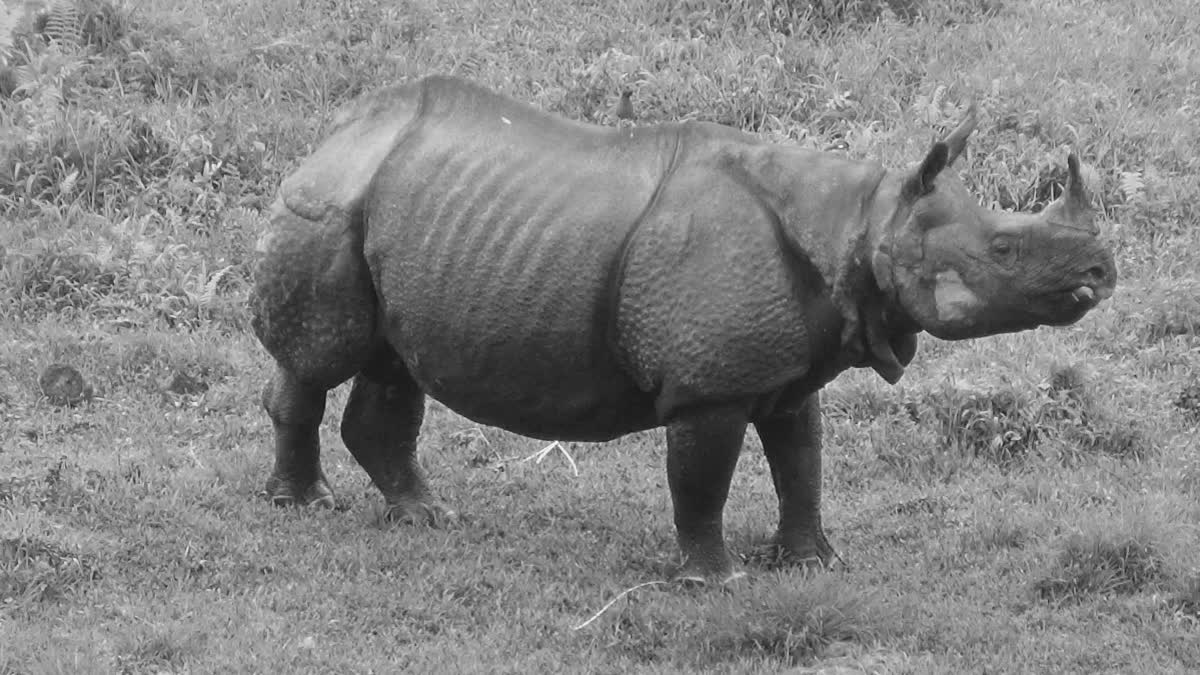Jalpaiguri (West Bengal): In February 2018, the untimely death of a female one-horned rhino named Kanchi was suspected to be the result of a horrifying incident – rape, in the world of rhinos. The two-and-a-half-year-old rhinoceros lost her life in Dhupjhora when she was forcibly coerced into mating, revealing a harrowing aspect of male-female imbalance of Rhinos in West Bengal’s national parks.
Kanchi's fate was not an isolated incident. The shadows of violence loom over the lives of these magnificent creatures in the state's national parks. On November 8, 2017, a young male rhino met its end in a fierce conflict between two male rhinos competing for the same female at Dhupjhora's 1B compartment. The young male resisted another adult male – ‘Don’ to get near his mother which resulted in a fight resulting in the younger one’s death. According to forest officials the age difference between Don and the female rhino - Chanchala triggered the conflict that ultimately led to the young rhino's demise.
This distressing pattern is not unique to Dhupjhora national park alone. Forest department officials said that similar conflicts are in abundance in other national parks also. On December 21, 2015, a rhinoceros perished after two adult rhinos engaged in a brutal battle over a mate at Holong Bit in the Western Range of Jaldapara National Park. These conflicts, often driven by territorial disputes and the quest for mates, frequently end in fatalities.
Wildlife experts assert that the root cause of this issue lies in the male-to-female rhino ratio, which is severely skewed. With male rhinos outnumbering the females, internal conflicts among males have become a tragic norm. In an ideal scenario, there should be three female rhinos for every male rhino to maintain a stable population. Unfortunately, the current ratio stands at a concerning 1:1, creating a breeding and survival crisis for these magnificent creatures.
Also read: West Bengal ramps up endangered one-horned rhino conservation measures
"The natural way of life for rhinos is for one male rhino to have access to three females for mating. But that equilibrium does not exist here. Consequently, breeding patterns are disrupted. When two males fight over a female, one male rhino often loses his life. We believe that the government should approach this issue scientifically," remarked Shyama Prasad Pandey, spokesperson for Spore, a voluntary organisation.
As of the 2022 rhino census, Gorumara National Park and Jaldapara National Park are home to a total of 55 and 292 rhinos, respectively, within a combined area of 89 and 216 square kilometers. The population includes both males and females, with the gender of some rhinos remaining undetermined.
Comparing these figures to those from 2019, there has been a slight increase in the rhino population. In Gorumara, the number rose from 52 to 55, while Jaldapara's population surged from 237 to 292. Despite these positive trends, the gender imbalance remains a significant concern, casting a long shadow over the future of rhinos in West Bengal.



